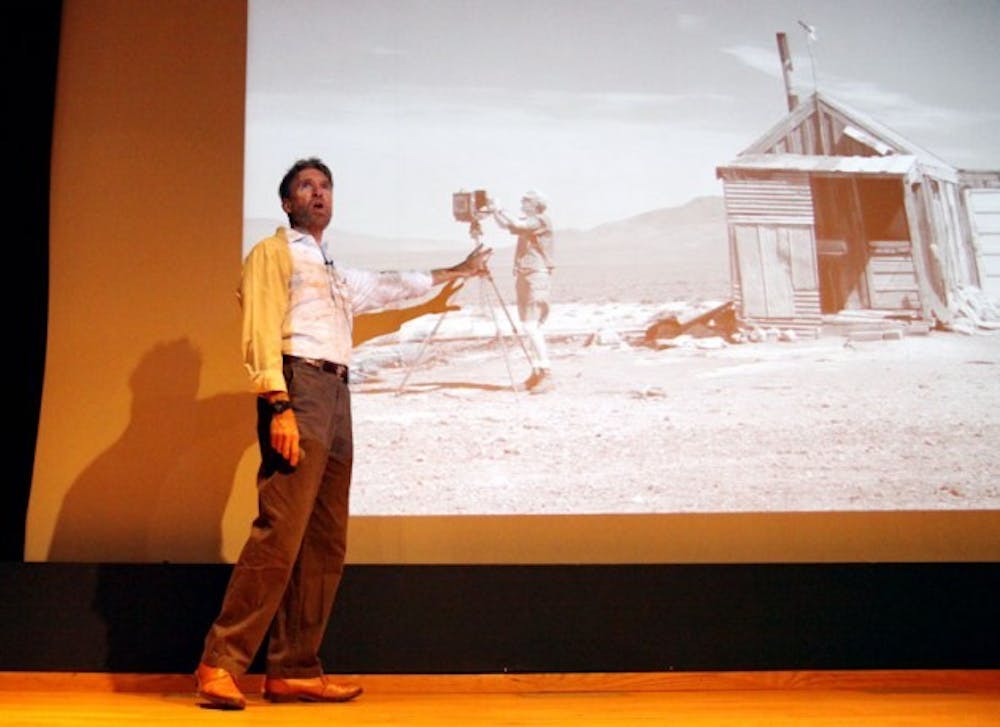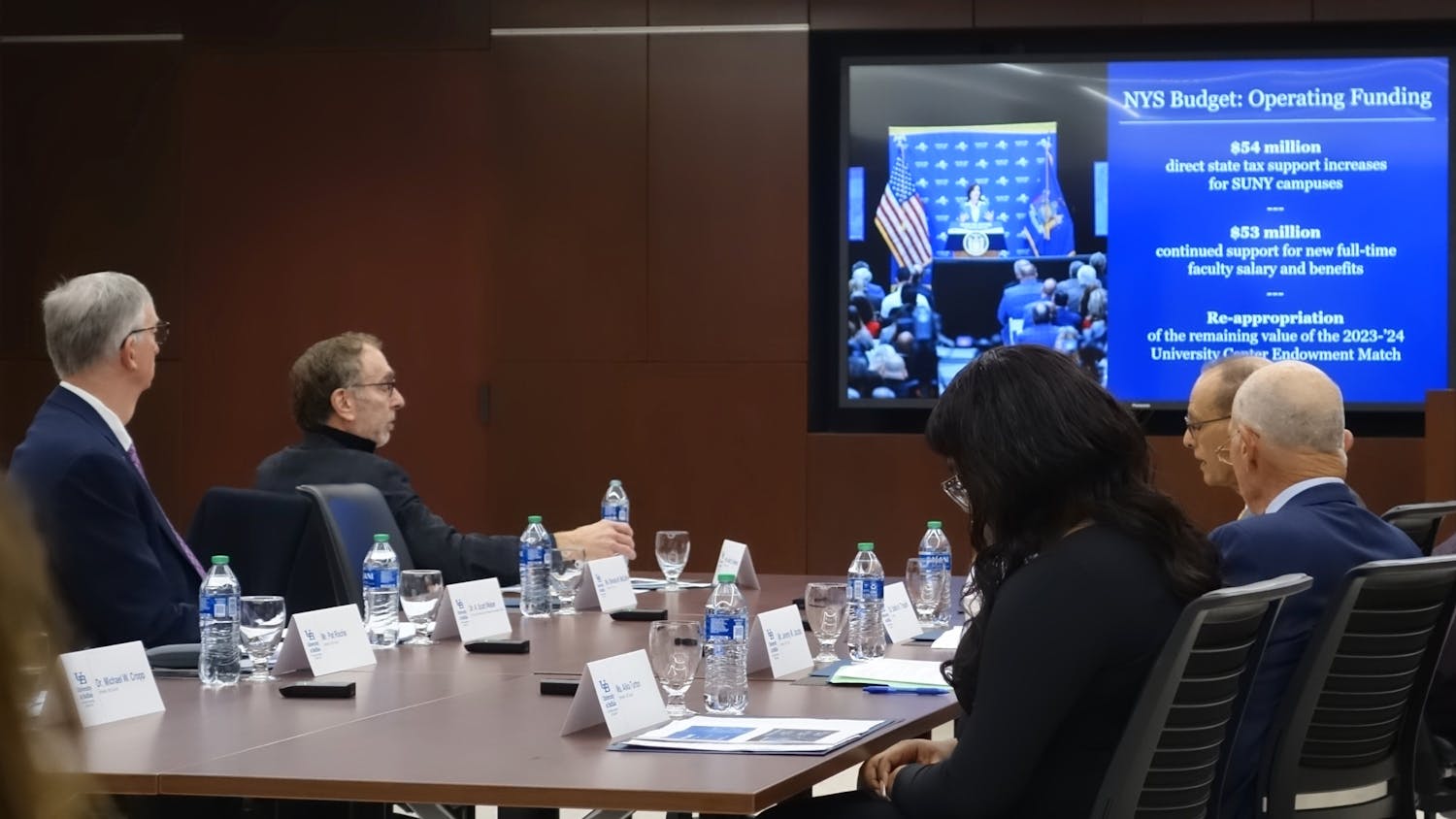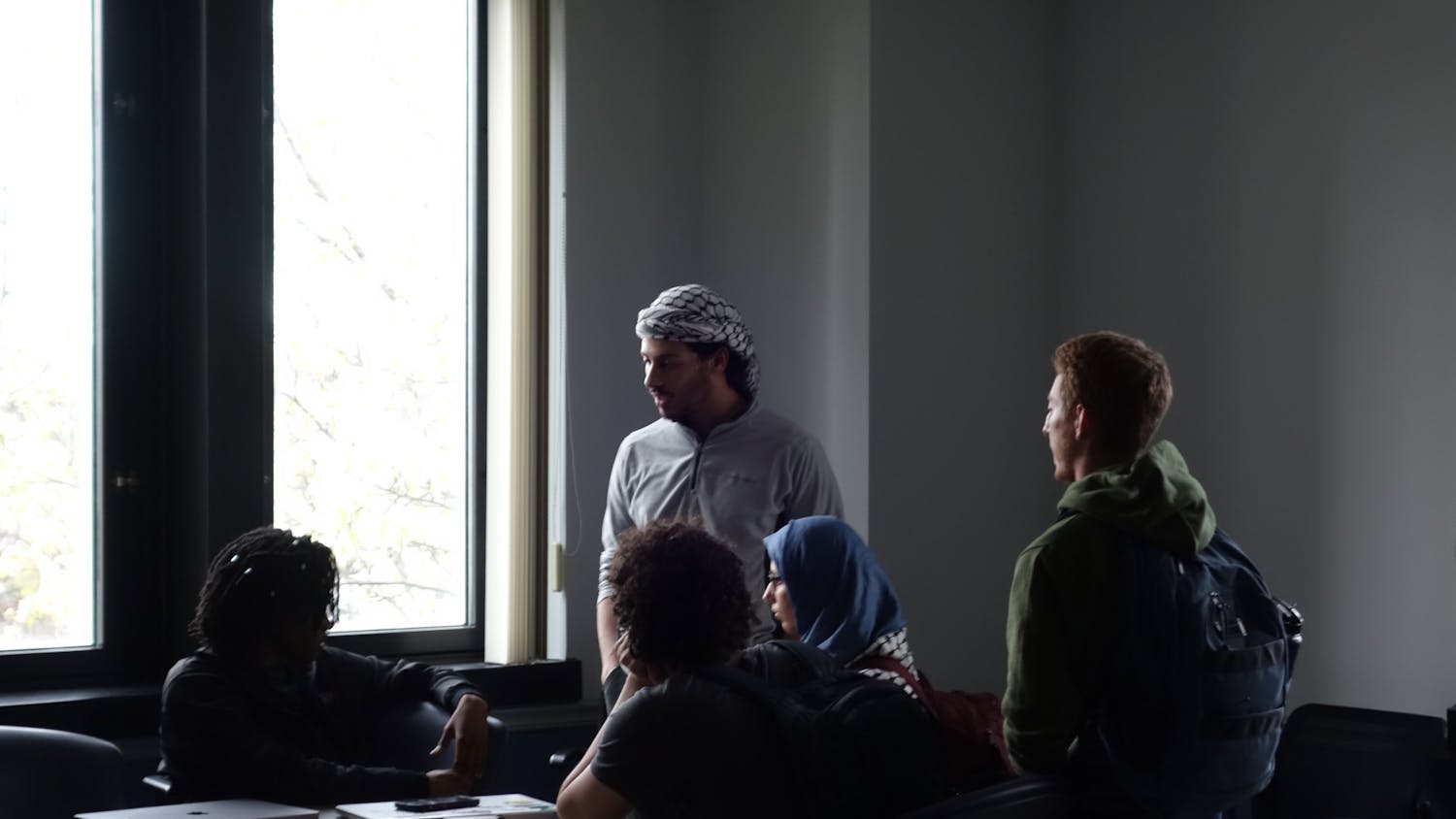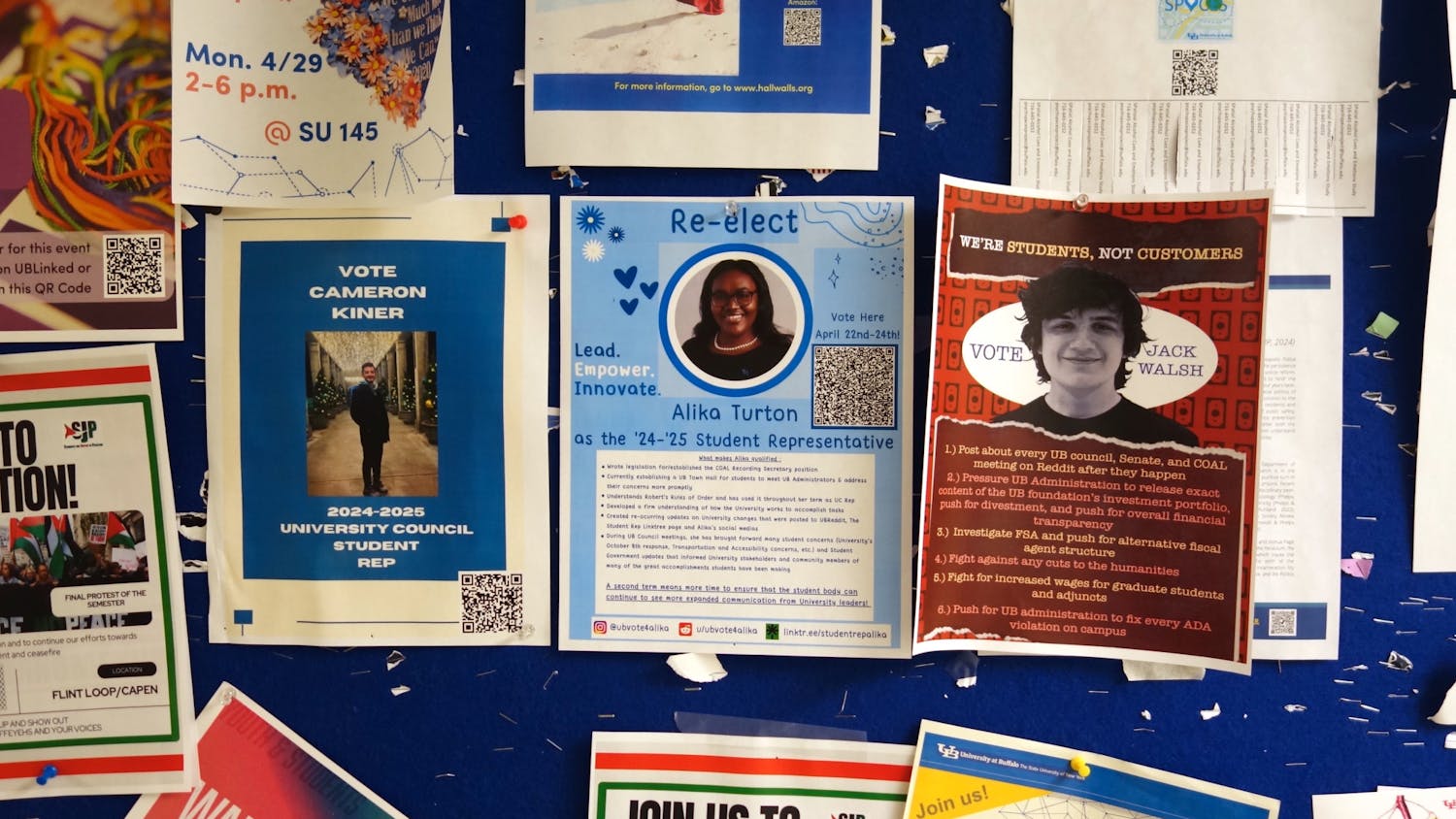When photographer Oliver Gagliani proposed a road trip to explore and capture the American Southwest in the ’70s, Brian Taylor wasted no time saying “yes.”
Brian Taylor, a professor of art and art history at San Jose University, came to UB Monday night as a part of the Department of Art’s speaker series. The series features a new artist every Monday for the duration of the fall semester, for a total of 13 speakers.
The speaker series runs in conjunction with Visual Studies 200, a one-credit lecture series course. The lectures, however, are open to the public. Since 2002, the series has been running every fall semester in the Department of Art.
Becky Koenig, the assistant to the chair of the Department of Art, said the speaker series is designed for all of undergraduate and graduate art programs and visual studies students “to gain first-hand knowledge from the series of lectures by a wide-ranging group of practicing artists, designers, critics, curators, art historians and theorists active in the field.”
This year, Taylor was invited to speak to students because of his exhibit in Buffalo’s CEPA Gallery entitled “Transformational Imagemaking: Handmade Photography since 1960.” Robert Hirsch, who introduced Taylor, also put together the CEPA exhibit. He recently released a book with the same title.
“Transformational Imagemaking: Handmade Photography since 1960” is an anthology of various artists, including Taylor. The pieces in the exhibit reflect modern photographers’ deviation from traditional photography by manipulating the photo with non-photo materials.
Taylor often uses watercolor, knife scratches and even his own fingerprints to enhance the meaning of the photo.
Encapsulating the fast-paced motion of life into a still, constant image is, in essence, the basics of photography, according to Taylor. And while it is important to master those skills, he said artists need to remember to add a piece of themselves to their work.
Taylor’s personal style was clear to the audience as he showed images of his own photographs precisely torn around the edges with strategically placed fingerprints. He overlaid them in color – all techniques to create handmade photographs.
Still photography requires conventional photography be stripped bare of its 21st century technicalities and brought back into the age where the process photography beckoned patience, Taylor explained.
When he began creating handmade photos Taylor was drawn to gum bichromate printing, a 19th century process for developing and adding color to photos.
Gum bichromate is the process of layering multiple images printed in cyanotype and platinotypes – printing an image in blue or tones of black and white, respectively – onto the negative copy of a photo. This creates an illusion of a painting rather than a picture. The tones of the gum printing appear differently to what the natural photograph displays, making the gum printed image different from modern photo processing and printing.
The process of itself is extensive; the negative has to be placed in sunlight before it’s painted with the emulsions, as well as after each layer of paint is applied. Once all the desired colors are painted onto the negative, the entire image is covered in carbon black pigment, placed in the sunlight for a final time and artists “hope it all goes well,” Taylor said.
Taylor, who studied visual arts at the University of California at San Diego, said so much of photography is about taking an image for what it is. The feelings evoked from a photo are based on the image that is being photographed. Taylor, however, wants to include his feelings while taking the photo in the final product.
“I want to add energy to [the photo],” Taylor said. “Give it the life I feel when I go to these places.”
Many of his photos begin as a simple still photograph – a landscape of the woods, a stewardess daydreaming as passengers aboard an aircraft or nightfall in the Sonora Desert. As he explained to the audience, the still photograph is only the beginning.
“Photography is Earth-bound,” Taylor said. “We try to up the ante to say more than the truthful photo.”
Taylor draws inspiration from Ansel Adams, an American photographer and Taylor’s mentor, and strove to bring a more human element to his work. He said hand-manipulating his photographs would connect the viewers with the image in the photo and with Taylor himself.
Taylor also discussed his handmade books, which he allowed him to juxtapose images and minimal text, creating a social commentary between both elements.
“Things made by hand have an aura of being real,” Taylor said.
Taylor joins a list of notable artists who have come to speak at UB, including Art Jones, Carolee Schneemann and Roger Shimomura. Koenig believes the speaker series helps students contextualize concepts, production of art and design.
Monday night’s lecture gave students ideas and inspiration for their own work, according to Stacey Robinson, a graduate student in the art department.
Students like Lydia Daggett, a junior in the bachelor of fine arts program, found Taylor’s lecture to be eye opening. As a photographer herself, she finds taking still photos can be limiting and can easily lose its creative elements.
“He changed my life today,” Daggett said. “I can relate a lot to his work because I hate how [photography] is just a snap.”
Taylor encouraged the audience saying, “Whatever is your favorite medium, make a lot of art and throw it all away.” He said he wants to remind students the process of art welcomes failure just as it welcomes creativity.
email: news@ubspectrum.com





